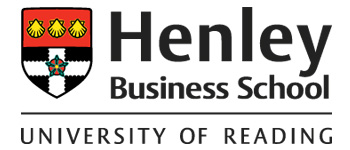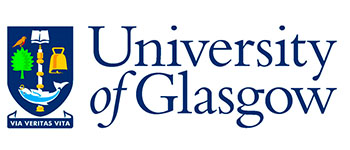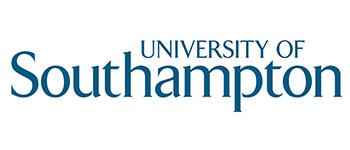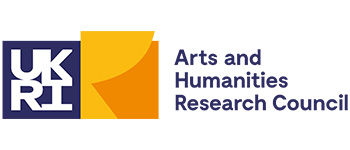Cressing Temple
EVENTS
The socio-economic causes of the revolt of 1381 were varied and complex; however the immediate catalyst for the events leading up to the attack on Cressing Temple was the grant by parliament in November 1380 of a poll tax which required every person over the age of 15 to pay twelve pence. This was the third time in four years that such a tax, which was unfair to poorer people, had been granted. The Speaker of the House of Commons which granted the tax was the Essex MP, Sir John Gildesburgh. By January 1381, the government was alarmed at shortfalls in the poll tax. In Essex, the collectors in 1381 identified only 30, 533 people as liable to pay the tax, despite the fact that 47, 962 had paid it in 1377. On 1 February, the King appointed a new Treasurer of England, Robert Hales, who was also the Prior of the Order of St John of Jerusalem (the Hospitallers) which owned Cressing Temple. Hales had earned a reputation as a valiant knight in Rhodes and Egypt in the 1360s and had considerable administrative experience in the order, but the chronicler Thomas Walsingham noted ominously that Hales's appointment as Treasurer would not please the community of the realm.
Commissions were appointed to revise the assessments. The Essex reassessment commission, issued on 16 March, included John Gildesburgh, despite the fact that parliament had specified that no member of parliament should be involved in collection of the tax. These reassessors were prominent targets of the rebels, who successfully obstructed revision of the assessment so that only 205 people were added to the Essex returns.
On 30 May 1381, there was a major attack on Gildesburgh, John Bampton, an unpopular local official, and other royal justices at Brentwood by men from the surrounding area armed with bows and arrows and led by Thomas Baker of Fobbing (a baker by trade) who was later executed for his part in the rising. This was followed by a congregation at Bocking on 2 June attended by rebel bands led by Robert Cardemaker of Bocking and William Smyth of Coggeshall, at which they 'swore to be of one agreement to destroy divers lieges of the lord king and his common laws and also all lordship pertaining to divers lords'. On 6 June these bands proceeded to Coggeshall, where they assaulted John Sewale, sheriff of Essex and Robert de Segynton, a clerk of the exchequer, so severely 'that their lives were despaired of'.
The Essex rebels made contact with insurgents in north Kent, and on 2 June Kentish rebels crossed the Thames to help spread the rising in Essex. Between the 6th and 9th of June the rebels sent messengers from village to village making proclamations in which the inhabitants were urged to rise up. John Snel, a stranger, was accused of ringing the church bell at St Osyth to incite the people to rebel. The countryside was alive with rumour: a carter told the people of Great and Little Wakering that Robert Hales was coming with 100 lances to kill everyone. In Essex the annual view of frankpledge was often held in the week after Whitsun, which in 1381 was the time between the 2nd and 8th June, just after the first decisive events occurred in Brentwood and Bocking. This meant that all male adults of several manors were officially summoned to a meeting at a very sensitive moment. However, the speed with which the rebellion spread suggests that some preparation and planning must have gone on secretly before the outbreak at the end of May. And the bows and arrows the rebels in Brentwood were armed with are certainly a far cry from the pitchforks, flails or scythes one might expect as peasants' weapons of choice.
On 10 June, these groups, along with other groups including that led by Thomas Bakere of Fobbing converged on Cressing Temple, where they tore down the manor house and other buildings and stole goods and chattels. So much was taken that after the revolt a special commission was issued to find and recover the goods of John Luttrell, the keeper of Cressing Temple, which were scattered throughout Essex. Some indictments specify a few of the items stolen, including money (100s, £40); 2 horses worth 40s; 2 cows worth 20s; 3 cows worth 24s; 12 bulls each worth 13s. 4d; a piece of lead worth 8d; armour, garments, gold and silver, and other goods and chattels worth £20. One indictment also states that books worth 20 marks were burnt. Further detail can be found in the account in the Anonimalle Chronicle: 'Now the high master of the Hospital of St John of Clerkenwell in London [Sir Robert Hales, the Treasurer] had a very fine and pleasant manor in Essex which he had ordered to be filled with victuals and other necessities for the holding of his general chapter: so it was well supplied with wines and suitably stocked for such an important lord and his brothers. And at this time the commons arrived at this manor, ate the food, drank three casks of good wine and threw the building to the ground, then burning it to the serious damage and loss of the said master.' [R. B. Dobson, The Peasants' Revolt of 1381 (2nd edition, London: Macmillan, 1983), p. 25.].
From Cressing Temple the rebels returned to neighbouring Coggeshall where they had been four days earlier, assaulted the sheriff John Sewale, looted his house, and killed the escheator John Ewell. The insurgents removed all the writs and administrative documents they could find from the sheriff's residence as well as the escheator's house in nearby Feering. The rebels finished their day's work with an attack on the Cistercian abbey of Little Coggeshall, where they destroyed its manorial court rolls. The following day the group had moved to Chelmsford where they ceremoniously burned the sheriffs' and escheators' records, taking particular care to destroy those sealed with green wax (brevia de viridi cera), the colour used for fiscal documents. They saved some 40 writs from the flames only to place them on poles positioned along the road to London. The bonfire and the display served as a symbolic warning to the government and its officials. Inspired by these actions, rebels under the leadership of prominent inhabitants of Chelmsford forcefully entered the manor of Bishop's Hall and the manor of Moulsham and burned all the manorial documents.
THE REBELS
The judicial records reveal the existence of a number of distinct groups involved in the attack on Cressing Temple: men of Bocking led by Robert Cardemaker; men of Coggeshall and surrounding areas led by William Smyth of Coggeshall; men of Fobbing and south Essex led by Thomas Bakere of Fobbing; men predominantly of South Benfleet and Hadleigh led by William atte Stable, late servant of Geoffrey Dersham, and a group from disparate locations led by John Flemyng, weaver, of Warley. In addition there are numerous indictments for individuals acting alone, in pairs or small groups.
In total there are indictments for 149 individuals involved in the attack on Cressing Temple. We can assume that the number indicted is significantly lower than the actual number of people there; KB 9/166/2 m. 4 for instance describes how John Geffrey bailiff of East Hanningfield made all the men of the villages of East Hanningfield West Hanningfield and South Hanningfield join the attack. All but one of these rebels were male; the exception is the unnamed woman who is described as 'late wife of William Dekne' who was part of the band led by William atte Stable.
In most cases (over 80%) we have information on where the Cressing Temple attackers were from; the largest group came from Bocking, and there was also a substantial contingent from Maldon (although these men appear to have for the most part been indicted separately, rather than acting as a distinct group). All but two came from Essex; the appearance of William Langnase of Northfleet in Kent illustrates the continuing liaison with Kentish insurgents; a suspect indictment names Thomas Farringdon, a member of an old London family who joined the revolt, but it is doubtful whether he was actually present at Cressing Temple.
We only have occupational information for 34 of these individuals; they included craftsmen and merchants, several servants, a couple of herds, a manorial tenant, a bailiff and a sexton, and interestingly two 'bokerlerpleyeres', defined by the OED as a fencer - possibly denoting someone who earned a living from fencing as entertainment. We can however add substantially to our knowledge through cross-reference with other sources, such as the poll tax returns. For example, of the 16 rebels from Bocking, we can identify 14 in the poll tax records: 2 labourers; 2 fullers; a carpenter; a draper; a weaver; a tailor; a mason; a cardmaker, and 5 for whom no further information is recorded. Approximately half of these men were married, and some such as Robert Cardemaker and Thomas Mason paid the higher tax rate (the 1381 poll tax was a flat rate of 1 shilling per taxpayer, but the wealthy were expected to pay more to aid the poor).
Manorial records provide the opportunity for 'biographical' descriptions, albeit fragmentary, of individual insurgents. For example, John Geffrey, bailiff of East Hanningfield, who was active throughout the rising, ordering the villagers East, West and South Hanningfield to meet at Great Baddow church to resist the advance of earl of Buckingham and his armed retinue at the end of the rising in Essex, was eventually captured, sentenced to death, and executed on 2 July 1381 in Chelmsford. The manorial court rolls for East Hanningfield reveal that Geffrey was a serf who was transferred from Badmondisfield in Suffolk by the countess of Pembroke. Barely a year before the rising, he and his wife Margeret acquired the reversion of 15 acres of land. In a court a month after his execution, his messuage, an unquantified amount of land, 2 dayworks (= acre) of wheat and a daywork of oats (not valued) and timber worth 8 marks (1 mark = 13s 4d) for building a new house was seized by the lady [ERO D/DP M833].
Often participation in the rising does not preclude a career in town government, as the case of John Page, one of the rebels from the large contingent of Maldon, illustrates. Throughout the 1380s, 1390s and 1400s he served as warden of the fair, ward-man, governor of the bridge at Heybridge and constable. His final entry in the court rolls was his election as bailiff in January 1408 [ERO D/B 3/1/1; D/DMb M1-4].
Ralph Cook of Bocking who is not listed in the (incomplete) third poll tax returns for this village can be identified as a weaver in the manorial court rolls, who was involved in the 1380s in several debt cases in connection with the sale and processing of cloth [Canterbury Cathedral Archive U15/11/1-6]. Cook's fellow rebel the butcher Geoffrey Bromlie is fined in the same court rolls for selling meat for excessive prices [Canterbury Cathedral Archive U15/11/9].
A final example is the case of Thomas Sawyer of the manor of Lawling in Latchingdon. In 1380 he was granted a messuage and 15 acres of customary land for four years and a rent of 17s a year. The next time he surfaces in the court rolls is in July 1390 when he was accused of having a bad reputation and that he had stolen cattle in Great Braxted, 12 miles north of his home. Sawyer's goods and chattels, comprising a cow, two mares, a wether (a castrated ram), 11 ewes and 8 lambs were confiscated [Canterbury Cathedral Archive U15/19/11; ERO D/DBr M30].
AFTERMATH
From the attacks at Cressing Temple and Chelmsford, some of the rebels went on to London. Ralph atte Wood went to Peldon where he seized records relating to the admiralty court and carried them on a pitchfork to the meeting of the rebels with King Richard at Mile End. However, many of the rebels did not go to London but stayed in Essex where they fomented rebellion. Thomas Bakere himself was still in Essex on 14th June, urging the men of Rayleigh to rise. Robert Cardemakere of Bocking moved towards Suffolk, where by 12th June he had linked up with John Wraw, the chaplain who became the leader of the rising in West Suffolk.
The close association of the Hospitallers with government finance and administration made them a prominent target during the revolt in London. A forge owned by the Hospitallers in the middle of Fleet Street was destroyed and the lawyers' offices in the Temple itself were ransacked. Following the destruction of John of Gaunt's opulent Savoy Palace on 13th June, the headquarters of the Hospitallers themselves at Clerkenwell Priory was destroyed. Another manor of the Hospitallers at Highbury to the north of London was also burnt. As the revolt spread through southern England, other property of the Hospitallers in Cambridgeshire was attacked and tenants of the Hospitallers in Lincolnshire withdrew their services. On 14th June, King Richard met the rebels at Mile End and offered them charters of freedom, but rebels entered the Tower of London and executed Hales together with Simon Sudbury, the Archbishop of Canterbury and Chancellor of England, and others.
A number of the Essex rebels who had made their way to London returned home after Mile End and were not present at the fateful meeting at Smithfield when Wat Tyler was killed. A group of wealthy men from Manningtree who had gone to London saw the concessions at Mile End as permitting them to take action against their enemies. They went straight back to Manningtree where they sought to execute unpopular local officials and beheaded a Fleming. Even after the rout by the Earl of Buckingham of a large rebel force near Billericay, agitators remained active throughout Essex for much of June 1381 and peace was only restored with the arrival of the King at Chelmsford on 1st July.






